... of the seven deadly sins, the eighth and most horrid is emotional blackmail ... whilst for this blogger, the only sacred thing is life itself
Monday, May 22, 2023
Wednesday, May 17, 2023
Thursday, April 27, 2023
Monday, April 24, 2023
THE almost COMPLETE WORKS OF SHAKESPEARE ... LINKS TO TEXTS ... WITH SOME ART AND ILLUSTRATIONS ... MAYBE SOME BOOK COVERS ... AND MAYBE SOME MOVIE STILLS AND POSTERS
ILLUSTRATIONS OF SHAKESPEARE’S PLAYS AND VERSES
Incomplete List of the “Works”
it is as well to remember that very little of what we read was published during Shakespeare's lifetime ... and much of what we read has been heavily edited ... questions and disputes will probably continue until the end of time ...
Publishing Shakespeare | Folger Shakespeare Library
Shakespeare bibliography - Wikipedia
https://www.youtube.com/watch?v=01Ytsmn4gv4&list=WL&index=3&t=146s
Shakespeare bibliography
From Wikipedia, the free encyclopedia
William Shakespeare (1564–1616)[1] was an English poet and playwright. He
wrote approximately 39 plays and
154 sonnets,
as well as a variety of other poems.[note 1]
Plays and work[edit]
Tragedies[edit]
Main article: Shakespearean tragedy
|
Title |
Year written |
First publications |
Performances |
Authorship notes |
|
1601–1608 |
First published in the First Folio |
Believed to have been performed between 1606 and 1608. |
||
|
Summary |
In a setting soon after Julius Caesar, Marc Antony is in love with Cleopatra, an Egyptian queen. What used to
be a friendship between Emperor Octavius and Antony develops into a
hatred as Antony rejects the Emperor's sister, his wife, in favour of
Cleopatra. Antony attempts to take the throne from Octavius and fails, while
Cleopatra commits suicide. |
|||
|
1605–1608 (believed) |
First published in the First Folio |
No recorded performances prior to the Restoration;
the first recorded performance involved Nahum Tate's bloody 1682 adaptation at Drury
Lane. |
||
|
Summary |
The Roman military leader Caius Martius,
after leading Rome to several victories against the Volscians, returns home as a war hero with a
new last name, Coriolanus, given for the city of Corioles which he conquered.
However, after an attempt at political office turns sour, he is banished from
Rome as a traitor. Hungry for revenge, Coriolanus becomes leader of the
Volscian army and marches to the gates of Rome. His mother, his wife, and his
son, however, beg him to stop his attack. He agrees and makes peace between
Romans and Volscians, but is assassinated by enemy Volscians. |
|||
|
Likely early 17th century |
First published in the so-called "bad" First Quarto, 1603 |
Earliest recorded performance of Hamlet was in June 1602, with Richard Burbage in the title role. |
Some scholars, such as Peter Alexander and Eric Sams, believe that the oft-attributed
source work known as the Ur-Hamlet was actually a first draft of
the play, written by Shakespeare himself sometime prior to 1589.[2] |
|
|
Summary |
Prince Hamlet is
visited by his father's ghost and ordered to avenge his father's murder by
killing King Claudius,
his uncle. After struggling with several questions, including whether what the
ghost said is true and whether it is right for him to take revenge, Hamlet,
along with almost all the other major characters, is killed. |
|||
|
1599[3] |
First published in the First Folio |
Thomas Platter,
a Swiss traveller, saw a tragedy about Julius Caesar at a Bankside theatre on 21 September 1599.
This was most likely Shakespeare's play. There is no immediately obvious
alternative candidate. (While the story of Julius Caesar was dramatised
repeatedly in the Elizabethan/Jacobean period, none of the other plays known
are as good a match with Platter's description as Shakespeare's play.)[4] |
||
|
Summary |
Cassius persuades
his friend Brutus to join a conspiracy to
kill Julius Caesar,
whose power seems to be growing too great for Rome's good. After killing
Caesar, however, Brutus fails to convince the people that his cause was just.
He and Cassius eventually commit suicide as their hope for Rome becomes a
lost cause. |
|||
|
First recorded performance: 26 December 1606, before King James I at the Whitehall Palace.[7] |
||||
|
Summary |
An aged king divides his kingdom between two of his daughters, Regan
and Goneril, and casts the youngest, Cordelia, out of his Kingdom for
disloyalty. Eventually he comes to understand that it is Regan and Goneril
who are disloyal, but he has already given them the kingdom. He wanders the
countryside as a poor man until Cordelia comes with her husband, the King of
France, to reclaim her father's lands. Regan and Goneril are defeated, but
only after Cordelia has been captured and murdered. King Lear then dies of
grief. |
|||
|
1603–1606[8] |
First published in the First Folio |
There are "fairly clear allusions to the play in 1607."[9] The earliest account of a performance of the play is April 1611,
when Simon Forman recorded
seeing it at the Globe Theatre.[10] |
The text of Macbeth which survives has plainly been
altered by later hands. Most notable is the inclusion of two songs from
Thomas Middleton's play The Witch (1615)[11] |
|
|
Summary |
Macbeth, a Scottish noble, is urged by his wife to kill King Duncan to
take the throne for himself. He covers the king's guards in blood to frame
them for the deed, and is appointed King of Scotland. However, people suspect
his sudden power, and he finds it necessary to commit more and more murders
to maintain power, believing himself invincible so long as he is bloody.
Finally, the old king's son Malcolm besieges Macbeth's castle, and Macduff
slays Macbeth in armed combat. |
|||
|
1602–1604[12] (c. 1603) |
First published in 1622 in quarto format by Thomas Walkley. Included in the First Folio the following year. |
Probably first performed for King James I at the Whitehall Palace on 1 November 1604.[12] |
||
|
Summary |
Othello, a Moor and military
general living in Venice, elopes with
Desdemona, the daughter of a senator. Later, on Cyprus, he is persuaded by
his servant Iago that his wife (Desdemona) is having an affair with Michael Cassio, his lieutenant. Iago's
story, however, is a lie. Desdemona and Cassio try to convince Othello of
their honesty but are rejected. Pursuing a plan suggested by Iago, Othello
sends assassins to attack Cassio, who is wounded, while Othello himself
smothers Desdomona in her bed. Iago's plot is revealed too late, and Othello
commits suicide. |
|||
|
1595–1596, with a possible early draft written in 1591[13][14] |
First published in 1597 in Q1[15] |
First performed sometime between 1591 and March 1597[16] |
||
|
Summary |
In Verona, Italy, two families, the Montagues and the Capulets, are in
the midst of a bloody feud. Romeo, a Montague, and Juliet, a Capulet, fall in
love and struggle to maintain their relationship in the face of familial
hatred. After Romeo kills Juliet's cousin Tybalt in a fit of passion, things
fall apart. Both lovers eventually commit suicide within minutes of each
other, and the feuding families make peace over their recent grief. |
|||
|
c. 1607[17] |
First published in the First Folio[18] |
No recorded performances during Shakespeare's lifetime.[17] An adaptation was staged by Thomas Shadwell in 1678.[18] |
Brian Vickers and
others argue that Timon of Athens was co-written with Thomas Middleton, though some commentators
disagree.[19] |
|
|
Summary |
Timon of Athens is an apparently wealthy man in his community who
freely gives of his abundance to those around him. Eventually, it becomes
apparent that he is living on credit, when all of his creditors ask for
payment on the same day. Timon asks for his friends to help, but is refused.
Angry at mankind's double nature, he leaves the city for the wilderness, and
lives in a cave. Despite the efforts of several men to cheer his spirits, he
dies full of hatred for humanity. |
|||
|
Probably late 1593[20] |
First published in quarto in 1594; the
second quarto was published in 1600, the third in 1611.[20] |
First recorded performance: 24 January 1594 at the Rose;
repeat performances on 29 January and 4 February. The play was performed by
the Admiral's Men and
the Lord Chamberlain's
Men later that same year in June 1594 at Newington Butts.
There was another performance, probably also by the Lord Chamberlain's Men,
on 1 January 1596, in Sir John Harington's household at Burley-on-the-Hill in
Rutland.[20] |
Brian Vickers argues that Titus Andronicus was
co-written with George Peele.[21] |
|
|
Summary |
Roman war hero Titus Andronicus returns victorious in his wars against
the Goths. He kills one of the sons of the Queens of the Goths in a revenge
ritual, despite her pleadings. When the queen becomes the Empress of Rome,
she takes revenge on the house of Andronici for her son's blood. She has her
sons rape and mutilate Titus' daughter, Lavinia, over her husband's murdered
corpse, then frames Titus' own sons for the murder. Lavinia, however, manages
to communicate to her father who the true murderers were, and Andronicus
takes revenge, killing the queen and her two sons, but being killed in the
act. |
|||
|
1602 (believed) |
1609: two separate editions in quarto |
The dates of the play's earliest performances are uncertain due to
contradictions in the editions published in 1609. |
||
|
Summary |
The Trojans are under siege by the Grecian army of Agamemnon. Troilus, a Trojan, falls in love with Cressida, a Greek captive. When Cressida is
given back to the Greeks as part of a prisoner exchange, Troilus fears that
she will fall in love with one of them. His fears prove to be true when he
crosses enemy lines during a truce and sees her and a Greek man together. |
|||
Comedies[edit]
Main article: Shakespearean comedy
|
Title |
Year written |
First publications |
Performances |
Authorship notes |
|
1601–1608 |
First published in the First Folio |
Believed to have been performed between 1606 and 1608. |
No recorded performances before The Restoration.
The earliest recorded performance was in 1741 at Goodman's Fields, with
another the following year at Drury Lane. |
|
|
Summary |
Helena, a ward of the Countess of Rousillion, falls in love with the
Countess's son, Bertram. Daughter of a famous doctor, and a skilled physician
in her own right, Helena cures the King of France—who feared he was dying—and
he grants her Bertram's hand as a reward. Bertram, however, offended by the
inequality of the marriage, sets off for war, swearing he will not live with
his wife until she can present him with a son, and with his own ring—two tasks
which he believes impossible. However, with the aid of a bed trick, Helena fulfils his tasks, Bertram
realises the error of his ways, and they are reconciled. |
|||
|
1599–1600 |
First published in the First Folio |
No recorded performances prior to the Restoration;
the first recorded performance involved Nahum Tate's bloody 1682 adaptation at Drury
Lane. |
No recorded performances before The Restoration,
though there was a possible performance at Wilton House in Wiltshire; the King's Men were
paid £30 to come to Wilton House and perform for the King and Court
(remaining there due to an outburst of the bubonic plague) on 2 December 1603. A
Herbert family tradition states the play was As You Like It.[22] The King's Company was
assigned the play by royal warrant in 1669, and it was acted at Drury Lane in
1723 in an adapted form called Love in a Forest.[23] |
|
|
Summary |
It's a dramatic comedy, known for its confusing yet tantalising
storyline that intrigues yet is one of the hardest by Shakespeare to
understand. Like most others of its genre and age, it relies heavily on
mistaken identity and desperate romance to induce humour between the artful
weaving of the 16th century language. |
|||
|
1592–1594 |
First published in the First Folio |
The first recorded performance was by "a company of base and
common fellows," mentioned in the Gesta Grayorum ("The
Deeds of Gray") as having occurred in Gray's Inn Hall on 28 Dec 1594. The
second also took place on "Innocents' Day"
but ten years later—in 1604, at Court.[note 2] |
||
|
Summary |
Egeon, about to be executed for unlawfully entering Ephesus, tells the
sad tale of his search for his twin sons and wife. The Duke agrees to spare
him if his family is found. Meanwhile, his twin sons, both of whom are named
Antipholus, and their servants, both of whom are named Dromio, are actually
in Ephesus, each unaware that he even has a twin. After a series of hilarious
events involving mistaken identity almost ending in catastrophe, the twins
are reunited with their mother and father, and realise their relation to each
other. |
|||
|
This play is hard to date, though a relationship with a tragicomedy
that Beaumont and
Fletcher wrote c. 1609–10 tends to support this
dating around 1609; though it is not clear which play preceded the other.[24] |
First published in the First Folio |
Only one early performance is recorded with certainty,[note 3] which occurred on Wednesday night of 1 Jan 1634, at Court. |
Possible collaboration[note 4] |
|
|
Summary |
The princess Imogen loves the commoner Posthumus, and marries him, but
her father, King Cymbeline, disapproves of the match and exiles Posthumus. In
exile, he meets the rogue Jachimo—who, to win a wager, persuades Posthumus,
wrongly, that he (Jachimo) has slept with Imogen. Enraged, Posthumus orders a
servant, Pisanio, to murder Imogen, but he cannot go through with his orders,
and instead she finds herself befriended by the wild-living Polydore and
Cadwal—who turn out to be her own brothers: Cymbeline's princes who had been
stolen from his palace in their infancy. The repentant Posthumus fights
alongside Polydore and Cadwal in a battle against the Romans, and following
the intervention of the god Jupiter, the various truths are revealed, and
everyone is reconciled. |
|||
|
Summary |
||||
|
Summary |
||||
|
Summary |
Antonio borrows money from Shylock, a Jewish moneylender, to lend
money to his friend Bassanio. Bassanio uses the money to successfully woo
Portia, a wealthy and intelligent woman with a large inheritance.
Unfortunately, a tragic accident leaves Antonio unable to repay his debt to
Shylock, and he must be punished as agreed by giving a pound of his flesh to
the moneylender. Portia travels in disguise to the court and saves Antonio by
pointing out that Shylock may only take flesh, and not any blood. Shylock is
foiled, Portia reveals her identity, and Antonio's wealth is restored. |
|||
|
Summary |
||||
|
Approximately 1595 |
Registered in the 1600 quarto by Thomas Fisher on 8 October 1600[25] |
The title page assures it was "sundry times publicly acted by the
Right Honorable the Lord Chamberlain and his Servants" prior to its 1600
publication. |
||
|
Summary |
In Athens, Hermia is in love with Lysander, defying her father's
command to marry Demetrius; the couple flee to the woods to avoid the law
sentencing her to death or a nunnery. Demetrius pursues them, and is in turn
pursued by Helena, who is in unrequited love with him. Meanwhile, a group of
low-class workers decides to stage a play for the wedding of the King and
Queen of Athens; they rehearse in the woods. Fairy king Oberon is quarrelling
with his queen Titania; he magically causes her to fall in love with one of
the actors, Bottom, whom he has transformed to have the head of an ass. He
also attempts to resolve the Athenian youths' love triangle, but his servant
Puck accidentally causes both Lysander and Demetrius to fall in love with
Helena instead of Hermia. In the end, Oberon has Puck restore Lysander to
loving Hermia, allows Demetrius to stay in love with Helena, and returns
Titania to her senses and Bottom to his shape. They return to Athens, where
Lysander and Hermia are pardoned and they all watch the workers (badly)
perform their play. |
|||
|
Summary |
In Messina, Italy,
a young prince named Don Pedro arrives from Aragon to visit a friend of his,
Leonato. With him he brings a Florentine named Claudio, a soldier named
Benedick, and his bastard brother, Don Jon. Upon their arrival, Claudio falls
in love with Leonato's daughter, Hero and wishes to marry her. Don Jon, out
of desire to cause mischief, interferes once unsuccessfully and once
successfully in thwarting the gullible Claudio into thinking that Hero and
that Claudio's friends are disloyal. Arguably, the leading couple of the play
are the soldier Benedick, and Hero's cousin, Beatrice, who, at the beginning
of the play, seem to detest each other, until Don Pedro persuades everyone
that they can make Benedick and Beatrice fall in love with one another. |
|||
|
Either 1607–1608, or written at an earlier date and revised at that
time[26] |
1609 quarto[26] |
The Venetian ambassador to England, Zorzi Giustinian, saw a play
titled Pericles during his time in London, which ran from 5 Jan 1606 to 23
Nov 1608. As far as is known, there was no other play with the same title
that was acted in this era; the logical assumption is that this must have
been Shakespeare's play.[27] |
Shakespeare is thought to be responsible for the main portion of the
play after scene 9.[28][29][30][31] The first two acts were likely written by a relatively
untalented reviser or collaborator, possibly George Wilkins.[32] |
|
|
Summary |
This episodic story, covering many years, charts the history of
Pericles, who believes he has lost both his daughter and his wife, but is
ultimately reunited with both. His daughter Marina, sold into prostitution,
proves to be a paragon of virtue; and his wife Thaisa, recovered by a skilled
doctor having been buried at sea, becomes a priestess of the goddess Diana. |
|||
|
Summary |
The play begins with a framing device, often referred to as the
Induction, in which a drunken tinker named Sly is tricked into thinking he is
a nobleman by a mischievous Lord. The Lord has a play performed for Sly's
amusement, set in Padua with a primary and sub-plot. The main plot depicts the courtship of Petruchio, a gentleman of
Verona, and Katherina, the headstrong, obdurate shrew. Initially, Katherina
is an unwilling participant in the relationship, but Petruchio tempers her
with various psychological torments—the "taming"—until she is an
obedient bride. The sub-plot features a competition between the suitors of
Katherina's more tractable sister, Bianca. |
|||
|
Summary |
Prospero, overthrown and exiled Duke of Milan,
lives on a small island with his daughter Miranda. By chance, his usurping
brother Antonio, along with Alonso, King of Naples (who helped him) and his
retinue, have passed near the island on a ship; Prospero, aided by his fairy
servant Ariel, has magically called up a tempest to shipwreck them. Prospero
toys with them but ultimately forgives Alonso (who has been betrayed in turn
by Antonio) and permits Alonso's son Ferdinand to marry Miranda. Before
returning to reclaim his throne, Prospero renounces magic. |
|||
|
1600–1601[33] |
First Folio |
Earliest known performance 2 February 1602[34] |
||
|
Summary |
Viola finds herself shipwrecked in Illyria and, assuming that her brother
Sebastian has died in the wreck, disguises herself as a man to gain a
position in Duke Orsino's court. Orsino sends Viola (whom he knows as
Cesario) to deliver a message to his love, Olivia. Olivia, however, dislikes the
Duke. She falls in love with Viola, who she thinks is a man. Eventually,
Viola's brother Sebastian, who in fact was unharmed in the wreck, reappears.
At a critical moment, Viola's true identity is revealed when members of the
court notice the similarities between her and Sebastian. Olivia quickly falls
in love with Sebastian, and Viola confesses her love for the Duke. |
|||
|
Summary |
Two close friends, Proteus and Valentine, are
divided when Valentine is sent to the Duke's court in Milan. Proteus later
follows, leaving behind his loyal beloved, Julia, and he and Valentine both
fall in love with the Duke's daughter, Silvia. Valentine proves himself brave
and honourable, while Proteus is underhanded and deceitful—and eventually
attempts to rape Silvia. Julia follows her betrothed to Milan, disguised as a
boy, Sebastian, who becomes Proteus' page. Eventually Proteus sees the error
of his ways and returns to Julia, while Valentine marries Silvia. |
|||
|
1613–1614[35] |
Published as a quarto in 1635[35] |
Thought to be a collaboration with John Fletcher.
Shakespeare is thought to have written the following parts of this play: Act
I, scenes 1–3; Act II, scene 1; Act III, scene 1; Act V, scene 1, lines
34–173, and scenes 3 and 4.[36] |
||
|
Summary |
Two close friends, Palamon and Arcite, are
divided by their love of the same woman: Duke Theseus' sister-in-law Emelia.
They are eventually forced to compete publicly for her hand, but once the
bout is over, the victor dies tragically and the other marries their love. |
|||
|
Estimates vary widely, from 1594–1611[37] |
First published in the First Folio. |
|||
|
Summary |
In Sicilia, King Leontes becomes convinced that
his wife, Hermione, is having an affair with his friend Polixenes, King of
Bohemia. He has her imprisoned and sends delegates to ask an oracle if his
suspicions are true. While in prison, Hermione gives birth to a girl and
Leontes has it sent to Bohemia to be placed alone in the wild. When the
delegates return and state that the oracle has exonerated Hermione, Leontes
remains stubborn and his wife and son die. Sixteen years later, a repentant
Leontes is reunited with his daughter, who is in love with the Prince of
Bohemia. His wife is also later reunited with him by extraordinary means. |
|||
Histories[edit]
Main article: Shakespearean history
|
Title |
Year written |
First publications |
Performances |
Authorship notes |
|
Likely early to mid 1590s |
First published in a 1598 quarto by Andrew Wise |
Though 1 Henry IV was almost certainly in performance
by 1597, the earliest recorded performance was on 6 March 1600, when it was
acted at Court before the Flemish Ambassador. Other Court performances
followed in 1612 and 1625. |
||
|
1597–1599 |
First published in a quarto in 1600 by Valentine Simms |
Philip Henslowe's
diary records a performance of a Henry VI on 3 March 1592,
by the Lord Strange's Men. Thomas Nashe refers in 1592 to a
popular play about Lord Talbot, seen by "ten thousand spectators at
least" at separate times.[38][note 5] |
||
|
1599 |
Published in a "bad quarto"[note 6] in 1600 by Thomas Millington and John Busby; reprinted in
"bad" form in 1603 and 1619, it was published fully for the first
time in the First Folio. |
A tradition, impossible to verify, holds that Henry V was
the first play performed at the new Globe Theatre in the spring of 1599;
the Globe would have been the "wooden O" mentioned in the Prologue.
In 1600 the first printed text states that the play had been performed
"sundry times", though the first recorded performance was on 7
January 1605, at Court. |
||
|
1588–1592 |
First published in the First Folio |
Philip Henslowe's
diary records a performance of a Henry VI on 3 March 1592,
by the Lord Strange's Men. Thomas Nashe refers in 1592 to a
popular play about Lord Talbot, seen by "ten thousand spectators at
least" at separate times.[38] |
There is stylistic evidence that Part 1 is not by Shakespeare alone,
but co-written by a team with three or more unknown playwrights (though Thomas Nashe is a possibility[39]). |
|
|
1590–1591 |
A version was published in 1594, and again in 1600 (Q2) and 1619 (Q3);
the last as part of William Jaggrd's False Folio. |
See notes for Henry VI, Part I above. Parts I and III of Henry VI are
known to have been playing in 1592, and it is assumed (but not reliably
known) part 2 was presented at the same times. |
||
|
1590–1591 |
A version was published in 1594, and again in 1600 (Q2) and 1619 (Q3);
the last as part of William Jaggrd's False Folio. |
Performed before 1592, when Robert Greene parodied one of the play's
lines in his pamphlet A Groatsworth of Wit. See notes for Part II
and I above. |
||
|
A fire destroyed the Globe Theatre during a performance of
this play on 29 June 1613, as recorded in several contemporary documents.[40] While some modern scholars believe the play was relatively new
(one contemporary report states that it "had been acted not passing 2 or
3 times before").[41] |
Thought to be a collaboration between Shakespeare and John Fletcher,
due to the style of the verse. Shakespeare is thought to have written Act I,
scenes i and ii; II, ii and iv; III, ii, lines 1–203 (to exit of King); V, i. |
|||
|
1595–1598[42] |
First known performance at Covent Garden Theatre on 26 February 1737
but doubtlessly performed as early as the 1590s. |
|||
|
Around 1593.[43] |
First published in a quarto in 1597. |
|||
|
1592 or 1593 |
Cuthbert Burby,
quarto editions in 1596 and 1599. |
Generally considered a collaboration with either Thomas Kyd or Christopher Marlowe,
but there is still no agreement upon the collaborators. |
||
Selected poems[edit]
|
Shakespeare's poems |
|||
|
Title |
Year written |
First publications |
Authorship notes |
|
1593[44] |
1593 |
||
|
1594[44] |
1594 |
||
|
1598 or 1599 |
An anthology of 20 poems collected and published by William Jaggard
that were attributed to "W. Shakespeare" on the title page, only
five of which are considered authentically Shakespearean. |
||
|
1601 |
|||
|
1609 |
|||
|
1609 |
|
Shakespeare in Art – The Public Domain Review
ANTONY AND CLEOPATRA
Tiepolo murals at the Palazzo labia
Web Gallery of Art, searchable fine arts image database (wga.hu)
https://www.metmuseum.org/art/collection/search/814858
Antony
and Cleopatra (complete text) :|: Open Source Shakespeare
CORIOLANUS
HAMLET
Hamlet | Folger Shakespeare Library
Hamlet, the melancholic Prince of Denmark | Wellcome Collection
https://www.naturalhistorymag.com/picks-from-the-past/12476/shakespeare-in-the-bush
JULIUS CAESAR
Julius Caesar (play) - Wikipedia
Julius Caesar | Folger Shakespeare Library
KING LEAR
King Lear | Folger Shakespeare Library
King Lear: madness, the fool and poor Tom | The British Library (bl.uk)
MACBETH
‘Lady Macbeth Seizing the Daggers‘, Henry Fuseli, ?exhibited 1812 | Tate
Macbeth | Folger Shakespeare Library
https://www.tate.org.uk/art/artworks/blake-pity-n05062
OTHELLO
Othello | Folger Shakespeare Library
Paintings of William Shakespeare’s Plays 9: Othello – The Eclectic Light Company
Critical approaches to Othello | The British Library (bl.uk)
ROMEO AND JULIET
Romeo and Juliet | Folger Shakespeare Library
TIMON OF ATHENS
Timon of Athens | Folger Shakespeare Library
TITUS ANDRONICUS
Titus Andronicus | Folger Shakespeare Library
TROILUS AND CRESSIDA
Troilus and Cressida - Wikipedia
Troilus and Cressida | Folger Shakespeare Library
ALL'S WELL THAT ENDS WELL
All's Well That Ends Well - Wikipedia
All's Well That Ends Well | Folger Shakespeare Library
an unusual perspective on this play ...
AS YOU LIKE IT
As You Like It | Folger Shakespeare Library
and some general remarks on Shakespeare's "comedy" ...
An introduction to Shakespeare’s comedy | The British Library (bl.uk)
THE COMEDY OF ERRORS
a very clear audio production out of the mists of time ...
The Comedy of Errors - Wikipedia
The Comedy of Errors | Folger Shakespeare Library
CYMBELINE
Cymbeline | Folger Shakespeare Library
LOVE'S LABOURS LOST
Love's Labour's Lost - Wikipedia
Love's Labor's Lost | Folger Shakespeare Library
MEASURE FOR MEASURE
Measure for Measure - Wikipedia
Measure for Measure | Folger Shakespeare Library
THE MERCHANT OF VENICE
The Merchant of Venice - Wikipedia
The Merchant of Venice | Folger Shakespeare Library
THE MERRY WIVES OF WINDSOR
The Merry Wives of Windsor - Wikipedia
The Merry Wives of Windsor | Folger Shakespeare Library
A MIDSUMMER NIGHT'S DREAM
A Midsummer Night's Dream - Wikipedia
A Midsummer Night’s Dream | Folger Shakespeare Library
MUCH ADO ABOUT NOTHING
Much Ado About Nothing - Wikipedia
Much Ado About Nothing | Folger Shakespeare Library
PERICLES, PRINCE OF TYRE
Pericles, Prince of Tyre - Wikipedia
Pericles | Folger Shakespeare Library
THE TAMING OF THE SHREW
The Taming of the Shrew - Wikipedia
The Taming of the Shrew | Folger Shakespeare Library
THE TEMPEST
The Tempest | Folger Shakespeare Library
(75) Ralph Vaughan Williams - Full Fathom Five (1951) - YouTube
TWELFTH NIGHT
Twelfth Night | Folger Shakespeare Library
THE TWO GENTLEMEN OF VERONA
The Two Gentlemen of Verona - Wikipedia
The Two Gentlemen of Verona | Folger Shakespeare Library
THE WINTER'S TALE
The Winter’s Tale | Folger Shakespeare Library
HENRY IV, Part 1
Henry IV, Part 1 | Folger Shakespeare Library
Drama on 3 - Henry IV, Part 1 - BBC Sounds
HENRY IV, Part 2
Henry IV, Part 2 | Folger Shakespeare Library
HENRY V
Henry V | Folger Shakespeare Library
(160) Touch Her Soft Lips and Part (Piano) - Stewart Dudley - YouTube
(160) HENRY V - Laurence Olivier - 1944 - Remastered - 4K - YouTube
HENRY VI Part 1
Henry VI, Part 1 | Folger Shakespeare Library
HENRY VI Part 2
Henry VI, Part 2 | Folger Shakespeare Library
HENRY VI Part 3
Henry VI, Part 3 | Folger Shakespeare Library
Henry VI Part III : William Shakespeare : Free Download, Borrow, and Streaming : Internet Archive
Henry VI, Part 3 | The British Library (bl.uk)
RICHARD III
Richard III (play) - Wikipedia
Richard III | Folger Shakespeare Library
HENRY VIII
Henry VIII | Folger Shakespeare Library
VENUS AND ADONIS
Venus and Adonis (Shakespeare poem) - Wikipedia
Venus and Adonis | Folger Shakespeare Library
THE RAPE OF LUCRECE
The Rape of Lucrece - Wikipedia
Lucrece | Folger Shakespeare Library
SHAKESPEARE'S SONNETS
Shakespeare's sonnets - Wikipedia
Shakespeare's Sonnets | Folger Shakespeare Library



.jpg)













.jpg)

.jpg)
.jpg)
.jpg)
.jpg)


.jpg)
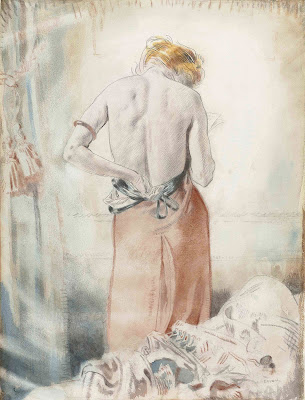


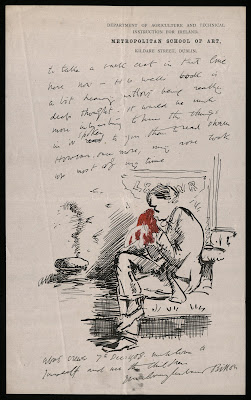





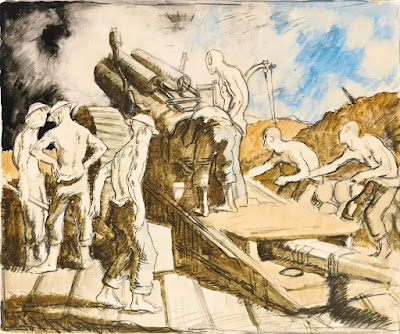
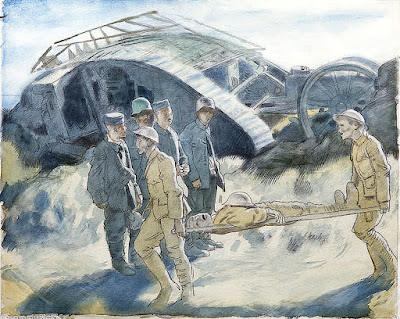
.jpg)
.jpg)
.jpg)
.jpg)
.png)





.jpg)













.png)

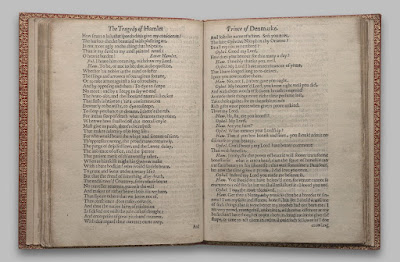


.jpg)


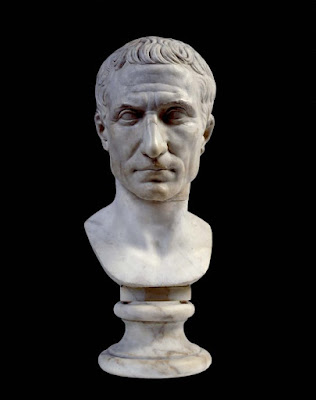







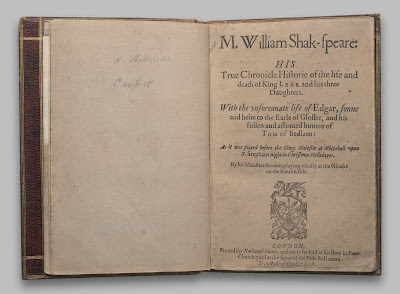












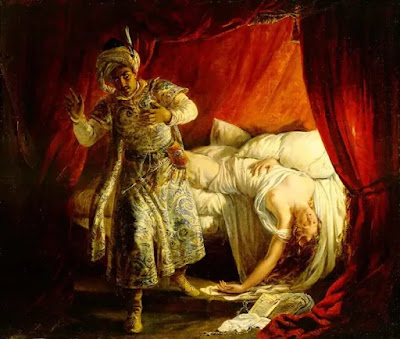






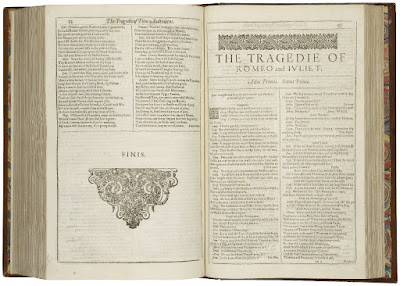



_MET_DP858601.jpg)









.png)











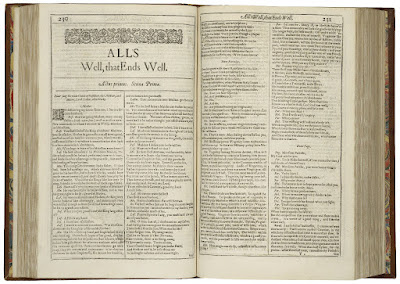









.jpeg)









_MET_DP859564.jpg)











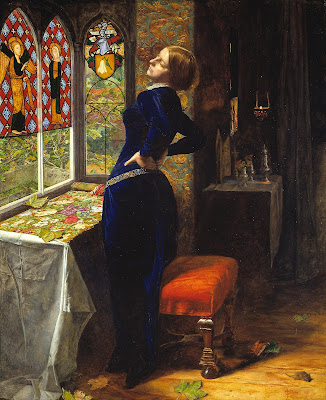




.webp)

.pdf.jpg)




















.jpg)



%20british%20library.jpg)












.jpg)

.png)








.webp)



.png)


.png)

_MET_DP109510.jpg)








.jpg)


.jpg)






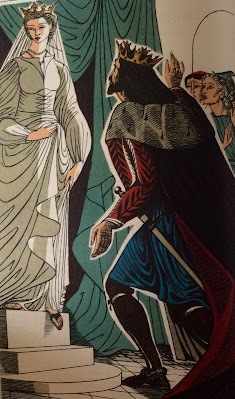




_MET_DP859566.jpg)

_first_published_1795,_reissued_1852_Robert_Thew,_after_Josiah_Boydell.jpg)


.jpg)



.jpg)


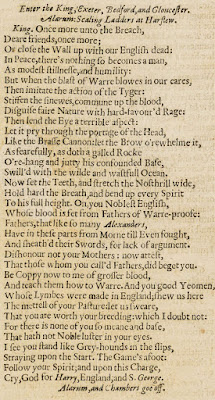






.jpg)
.jpg)
.jpg)







.jpg)








.jpg)
.jpg)



.png)





